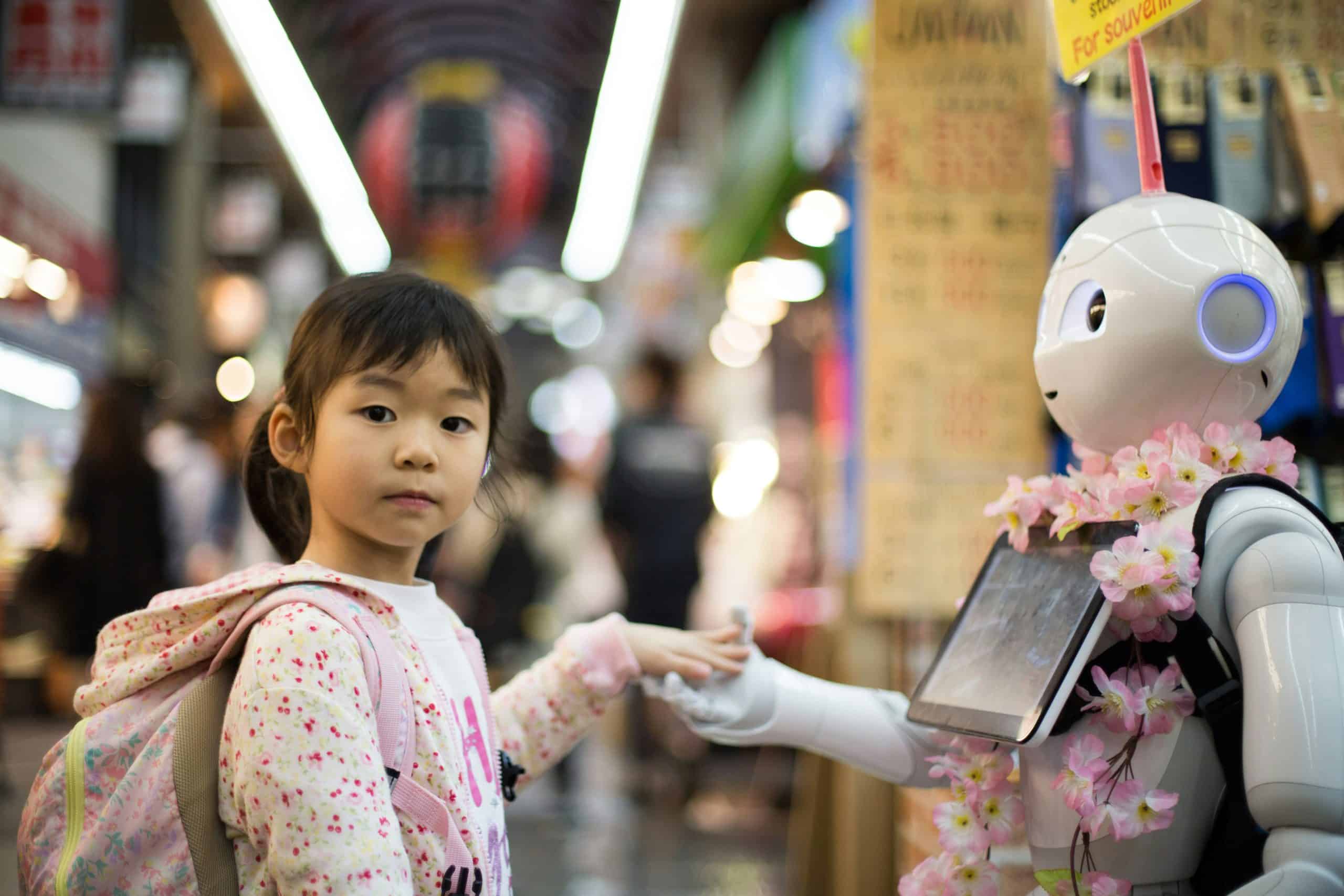What role will robots play in future education systems?

The integration of robots into various sectors has revolutionized the way we approach tasks, from manufacturing to healthcare. Now, the spotlight is on education, a domain where the interplay between students and educators is fundamental. As we stand on the brink of a new era, robots are beginning to make their presence felt in classrooms across the globe. The question arises: what role will robots assume in future education systems? With numerous studies conducted and reported on platforms like Google Scholar, and findings discussed at international conferences, we can anticipate a future where robots will have a significant impact on learning outcomes, teaching methodologies, and the development of skills in children.
In this article, we will dive into the realm of educational robots, exploring their potential to enrich STEM education, facilitate collaborative learning, and enhance the problem-solving abilities of scholars. We will also consider the implications of robots on the social aspect of education, the role of teachers in this new landscape, and the integration of robotics into higher education.
A découvrir également : What is the role of ai in predicting natural disasters?
Educational robots: enhancing learning outcomes
Robots designed specifically for educational purposes, known as educational robots, are no longer a futuristic fantasy. They have begun to make their way into the classroom, providing an interactive and engaging way for students to learn. These robots are not intended to replace teachers but to serve as tools that can supplement traditional teaching methods, promoting an active learning environment.
The application of educational robots can significantly transform how subjects, particularly STEM (Science, Technology, Engineering, and Mathematics) disciplines, are taught. Robotics and computational thinking are integral components of STEM education, and robots provide a tangible way for students to apply and understand these concepts. By programming and interacting with robots, students develop critical thinking and problem-solving skills, which are essential in the digital age.
Cela peut vous intéresser : The role of tech in sustainable agriculture
Studies have shown that the use of educational robots can lead to improved learning outcomes. Students often find robotics education engaging and motivating, resulting in better retention of information and a deeper understanding of the material. The hands-on nature of working with robots allows students to experiment, make mistakes, and learn from them, fostering a growth mindset.
Moreover, educational robots can cater to different learning styles. Visual and kinesthetic learners, in particular, benefit from the ability to see and manipulate the robots, making abstract concepts more concrete. As technology evolves, so too does the sophistication of these robots, creating ever-more opportunities for innovative and effective learning experiences.
The role of teachers in robotics education
The integration of robots into education does not diminish the role of teachers; rather, it redefines it. Teachers remain the facilitators of learning, with robots serving as an additional resource to enhance the educational experience. Educators must adapt to this new technology, learning how to incorporate robots into their lesson plans effectively and how to manage a classroom where robots are a central teaching tool.
Training for teachers is crucial for the successful implementation of robots in education. Educators must be comfortable with the technology to confidently teach and troubleshoot as necessary. This requires professional development opportunities and ongoing support as educational technology continues to evolve.
Teachers also play a vital role in ensuring that the use of robots in the classroom is pedagogically sound. They must design activities that make effective use of the robots’ capabilities while aligning with educational objectives. Moreover, teachers are responsible for creating an environment that encourages collaboration and critical thinking, guiding students as they work with the robots to solve problems and complete tasks.
The human touch that teachers provide cannot be replicated by robots. Teachers understand the social and emotional needs of their students, can offer personalized feedback, and can adapt their teaching strategies to meet the needs of individual learners. As robots become more prevalent in education, the empathetic and intuitive nature of human teachers will become even more valuable in nurturing well-rounded, emotionally intelligent individuals.
Collaborative learning with social robots
Social robots, designed to interact with humans in a socially acceptable manner, are a subset of educational technology that has the potential to foster collaborative learning among students. These robots can participate in group activities, offering prompts, feedback, and challenges that encourage students to work together.
Collaborative learning with robots can teach students valuable social skills such as communication, cooperation, and conflict resolution. When students work together with a robot, they learn to articulate their ideas, listen to others, and negotiate roles and responsibilities. The robot can act as a neutral party, helping to guide the group’s dynamics in a positive direction.
Furthermore, social robots can be programmed to adapt to the group’s performance, providing more or less assistance as needed. This responsive behavior helps keep students engaged and ensures that the learning experience is tailored to the group’s level. As a result, students can achieve a sense of accomplishment as they overcome challenges together.
Studies suggest that the inclusion of social robots in educational settings can improve the quality and effectiveness of collaborative learning. These robots can provide a consistent presence in the classroom, reliably delivering content and assistance, which can be particularly helpful for teachers managing large classes or students with diverse needs.
Robotics education and problem-solving skills
One of the most compelling reasons to incorporate robots into education is their ability to enhance students’ problem-solving skills. Robotics education requires students to engage in computational thinking, a method of approaching problems in a systematic and logical way. This involves breaking down complex tasks into manageable parts, developing algorithms, and iterating on solutions.
Encouraging students to approach problems like a programmer or an engineer fosters an analytical mindset. When working with robots, students must consider constraints, work with variables, and debug when things don’t go as expected. Through trial and error, they learn resilience and adaptability, skills that are applicable beyond the classroom.
In addition, robotics projects often have real-world applications, making the problem-solving process more relevant and engaging for students. By seeing the tangible results of their efforts, students can connect the abstract concepts they learn to practical scenarios. This relevance can lead to increased motivation and a desire to tackle more complex problems.
The development of problem-solving skills through robotics education is critical in preparing students for the future workforce. As industries become more reliant on technology and automation, the ability to think critically and solve problems will be in high demand. Introducing these skills early in education can give students a head start in developing competencies that will serve them throughout their lives.
The future of robots in higher education
Robots are not solely beneficial in primary and secondary education; their role in higher education is also expanding. Universities around the world are incorporating robotics into their curricula, not only in engineering and computer science programs but across a range of disciplines.
In higher education, robots can provide hands-on learning experiences that are vital for deepening students’ understanding of complex topics. They can simulate real-world scenarios, allowing students to apply theoretical knowledge in a controlled environment. This experiential learning approach can enhance critical thinking and problem-solving skills at a higher level.
Furthermore, robots in higher education serve as a platform for research and development. Students and faculty can work together to advance the field of robotics, exploring new applications and innovations. This collaborative effort contributes to the body of knowledge and can lead to breakthroughs that impact various industries.
The role of robots in higher education also extends to tasks such as tutoring, where they can offer additional support to students outside of the classroom. With advancements in artificial intelligence, these robots can provide personalized feedback and adapt to individual learning styles, supplementing the work of human tutors.
Conclusion
As we consider the future of education systems, it is clear that robots will play an increasingly important role. Educational robots have the potential to enhance learning outcomes, transform teaching methodologies, and equip students with the skills they need to thrive in a technology-driven world. Teachers will remain indispensable, their roles evolving alongside the technology to facilitate a rich learning experience that balances human intuition with robotic precision.
Collaborative learning and problem-solving skills will be amplified through the use of social and educational robots, preparing students to work effectively in teams and tackle complex challenges. Higher education will not only benefit from the inclusion of robots in teaching but will also be a driving force in the ongoing development of robotics technology.
The integration of robots into educational settings represents a significant opportunity to reimagine and enrich the learning process. As educators, scholars, and policymakers work together to navigate this new landscape, the focus must remain on how these technologies can support and enhance human potential. With careful planning and a commitment to lifelong learning, robots will undoubtedly become invaluable allies in the quest to educate future generations.
